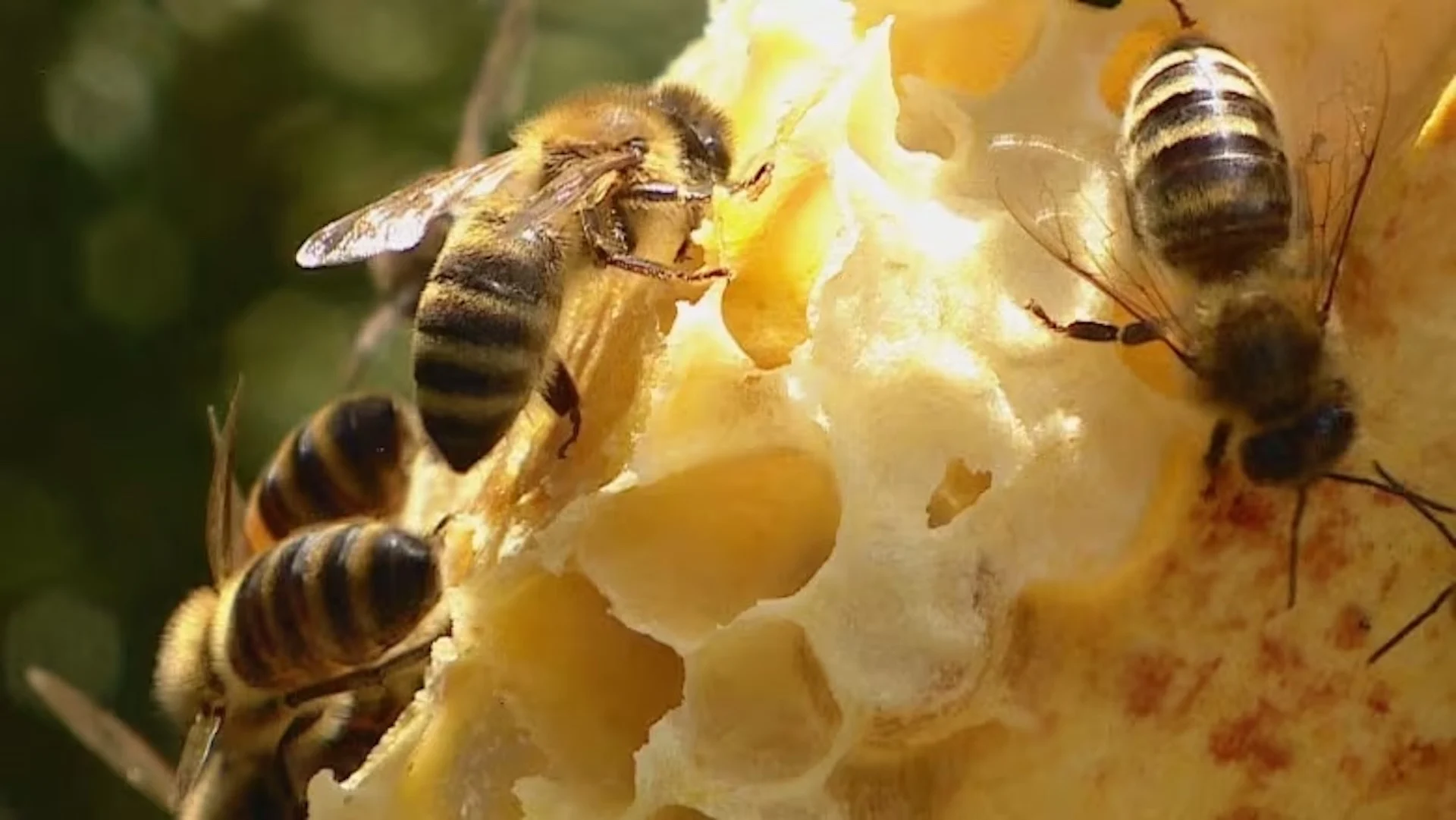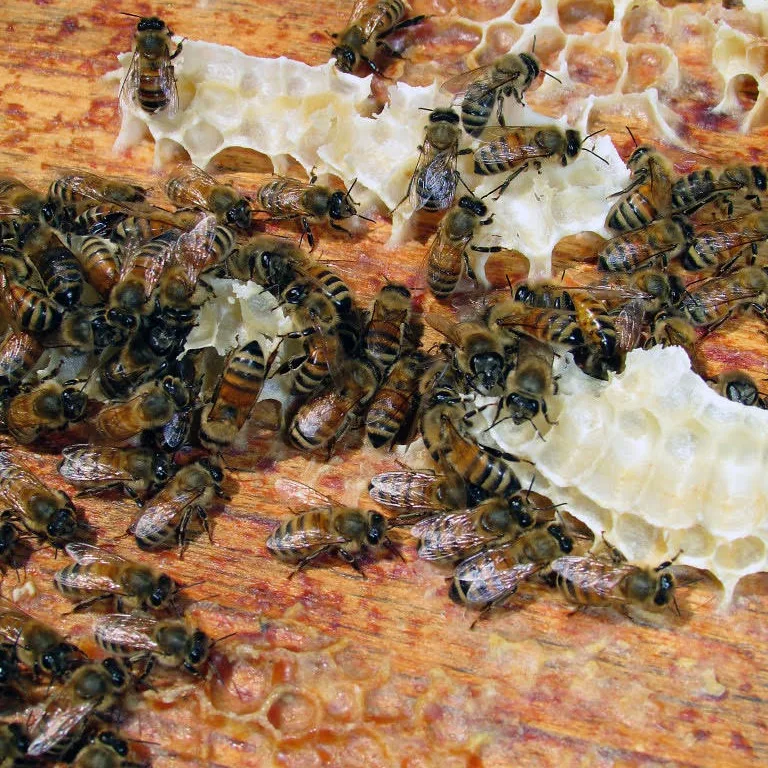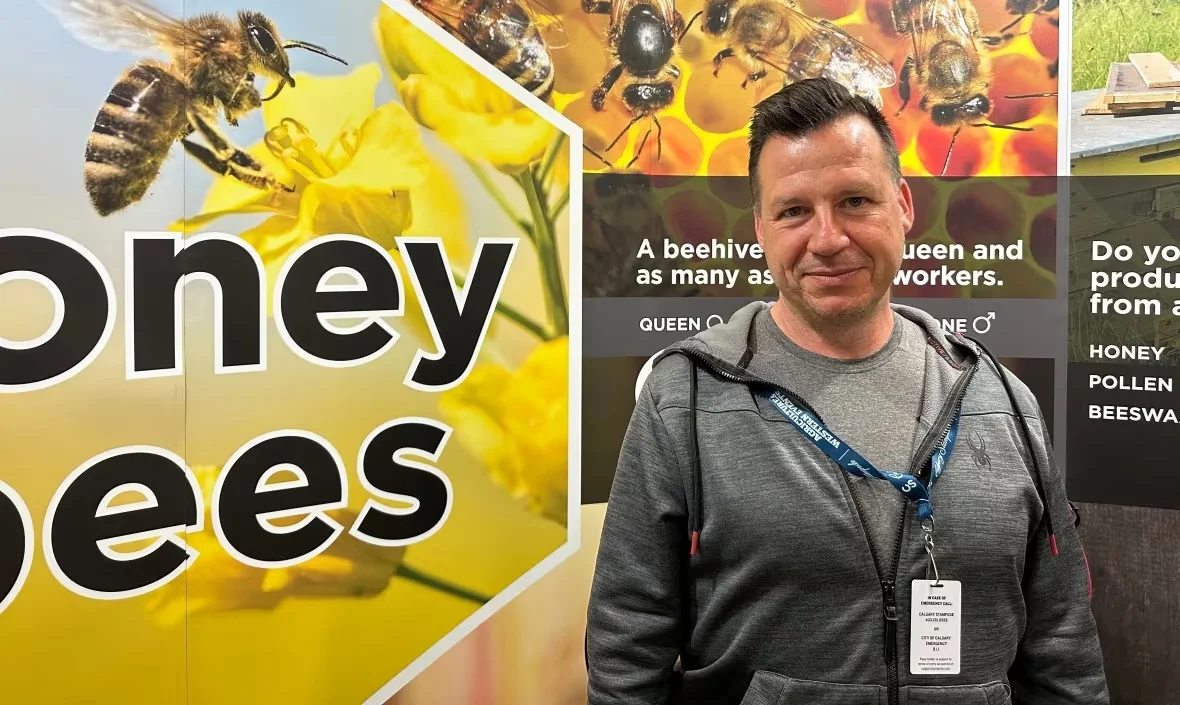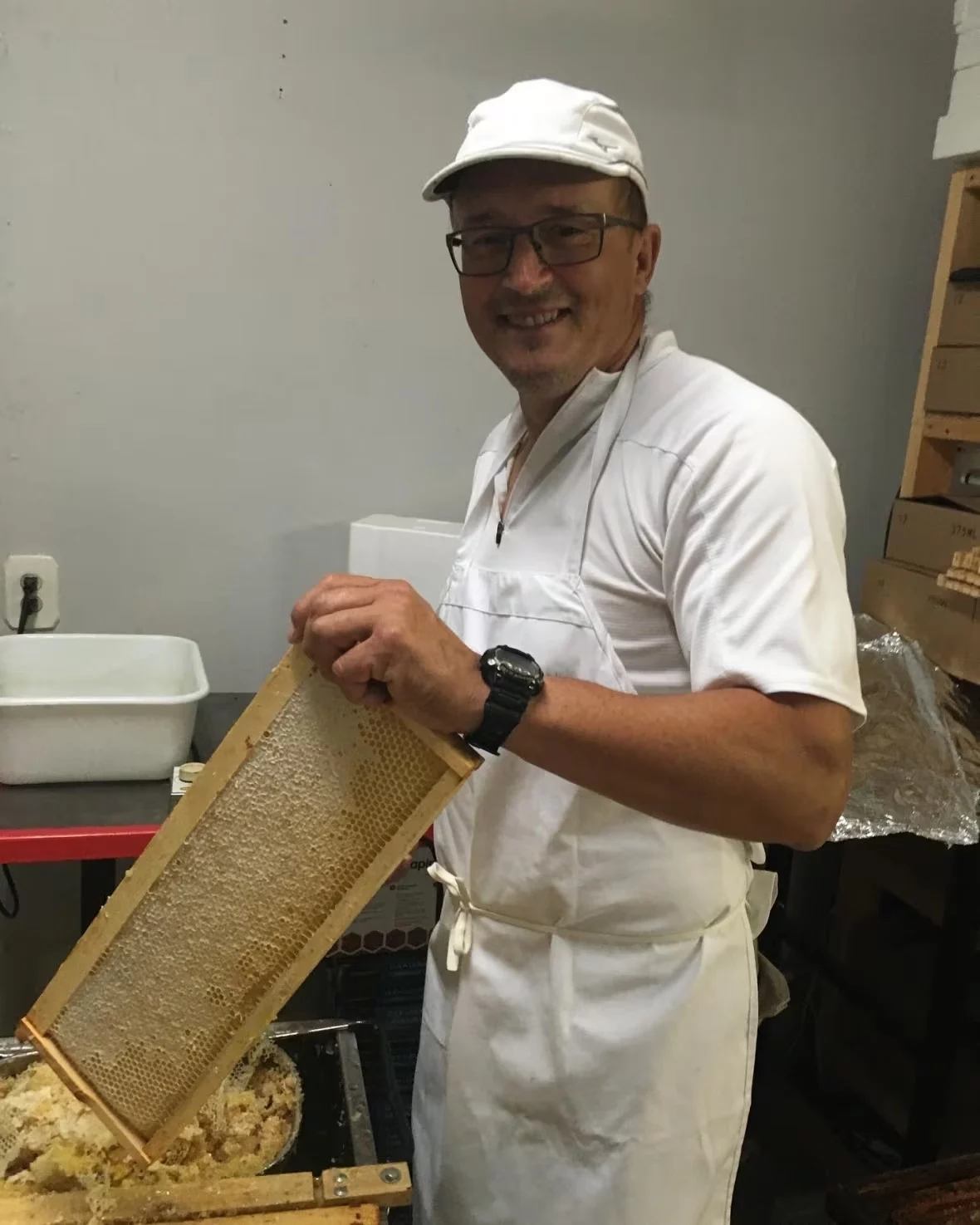
Honey, I'm hot! What summer heat does to honeybees
While the hot weather has many Calgarians worrying about the effect on their pets and children, Katie Merchant is concerned about her honeybees.
"I try really hard to humanize with my bees," she said. "We try to treat them any way that you would take care of a baby or a kid."
Merchant is the owner and operator of The Honey Merchants, a local honeybee farm with around 40 hives, or roughly four million bees. As high temperatures blanket parts of Canada, she's doing everything she can to keep her bees cool.
DON'T MISS: Male honeybees can't handle heat, cold stress like females can
"We're just working to adapt where they need to adapt, and do what we need to do to make sure that they're comfortable."
Like humans, honeybees are also trying to cope with the heat.
As temperatures rise, the pollinators can become stressed — and in extreme cases, die — reducing their productivity and reproductive abilities.
Male honeybees, also known as drones, are the most susceptible, said Alison McAfee, a postdoctoral research fellow at the University of British Columbia.

Alison McAfee is a postdoctoral research fellow with the University of British Columbia, studying how heat affects honeybees and their fertility. (Leslie Kennah/Michael Smith Lab)
She said her research has found half of drones die from heat stress after being exposed to temperatures of 42 C for six hours. While outdoor temperatures have so far not exceeded 35 C in Calgary, according to Environment and Climate Change Canada, McAfee said temperatures inside the hive can be much warmer.
In the short-term, intense heat affects how bees behave and produce honey, McAfee said.
Normally, honeybees focus their efforts on foraging for nectar and pollen to support their colony, but when temperatures heat up, they have to divert their efforts to cooling off.
"Some of those foragers then need to change tactics and actually forage for water instead," said McAfee. "They're still foraging, but they're not pollinating when they're foraging for water."
Bees use water to cool off, she said, bringing it back to the hive where they can force it to evaporate by fanning their wings.

(Nathan Howes/The Weather Network)
This, however, shifts the bees' focus away from producing honey, said Daniel Swan, owner of Bowness Blossoms Apiary and member of the Calgary and District Beekeepers Association.
"When the heat comes up, they have to dedicate their entire workforce to air circulation," said Swan.
But when that doesn't work, honeybees are forced to move outside their colonies, where they linger along the outside of their bee boxes — behaviour known as "bearding."
"Sometimes beekeepers see this big beard of bees hanging on the front of the colony because the bees inside have had to vacate to allow more of that air circulation and try to keep the brood from overheating," McAfee said.
While bearding is normal behaviour, McAfee said that in extreme heat it can be a sign the bees are too hot. They typically try to maintain a core hive temperature of 35 C, and bearding can be a sign the nest is hotter than this.
The beekeeper's role
Swan said he hasn't seen any bearding from his bees, in part because of the measures he is taking to keep them cool.
One piece of equipment he uses is a slatted rack inserted at the bottom of the hive. The rack creates space beneath the hive allowing air to flow up and through the nest.

Daniel Swan is the owner of Bowness Blossoms and a member of the Calgary and District Beekeepers Association. (Kelsea Arnett/CBC)
"It allows them to have a little more room to put their feet, cool them off, but they're not allowed to build honeycomb in there," said Swan. "It helps them enlarge the overall space of the hive."
Another technique he uses is what's known as a "quilt," but it's not a blanket. These quilts are wooden boxes filled with wood shavings placed on top of the hive.
"It's like the attic in our house," he said, adding that it keeps the sun off of the hive's roof and allows for a little bit of moisture to build up.
Not-so-busy bees
According to the Government of Alberta, the province has the largest beekeeping industry in Canada, representing around 40 per cent of honeybees in the country.
In 2023, Statistics Canada reported Alberta had 302,900 honeybee colonies, and those produced 40 per cent of the country's overall honey production that year.
Hot summers can delay beekeepers during the relatively short window they have to collect honey, said Lyndon Janiskevich, a beekeeper and owner of Farm Joy, a bee-yard in De Winton, Alta.

Lyndon Janiskevich is the owner and operator of Farm Joy just outside of Calgary. (Submitted by Lyndon Janiskevich)
He said the heat means plants are not producing as much nectar, which means the bees struggle to get enough food. And no honey means beekeepers have to delay collecting it, and must continue feeding their bees pollen.
While it hasn't affected his bees in southern Alberta so far this summer, Janiskevich also said that wildfire smoke combined with hot weather can make bees sluggish, as smoke is typically used to calm them.
"They are not as active and you won't get as much honey from them because they're just not flying out and getting any nectar," said Janiskevich.
Invisible effects
While bee behaviour returns to normal once extremely hot temperatures cool off, McAfee said there are lingering effects on the bees' ability to reproduce.
If bees are exposed to temperatures around 40 C for even a couple hours, McAfee said sperm viability can reduce by up to 30 per cent. Heat causes oxidative stress, which can result in DNA damage, especially within sperm cells, she said.

(Videoblocks)
While male bees are most affected, the queen can also suffer, as they can store sperm in their bodies for one to three years.
McAfee said when an egg is fertilized, the queen releases more than one sperm to account for any duds. If worker bees are infertile, the queen will fail to replenish her sperm levels and the colony will suffer.
It's important to remember that extreme heat doesn't only affect honeybees, McAfee said, adding beetles, wasps and butterflies can also experience similar impacts to their fertility.
While Merchant is focused on her own bees, she adds that it's important to consider the affects on all other types of bees, too.
"I am a true believer of save the bees," she said. "And save the bees genuinely means not just honeybees, it means native bees as well."
WATCH: Study finds microplastics attached to honeybees
Thumbnail image courtesy of Monty Kruger/CBC.
The story was originally written by Kelsea Arnett and published for CBC News.









